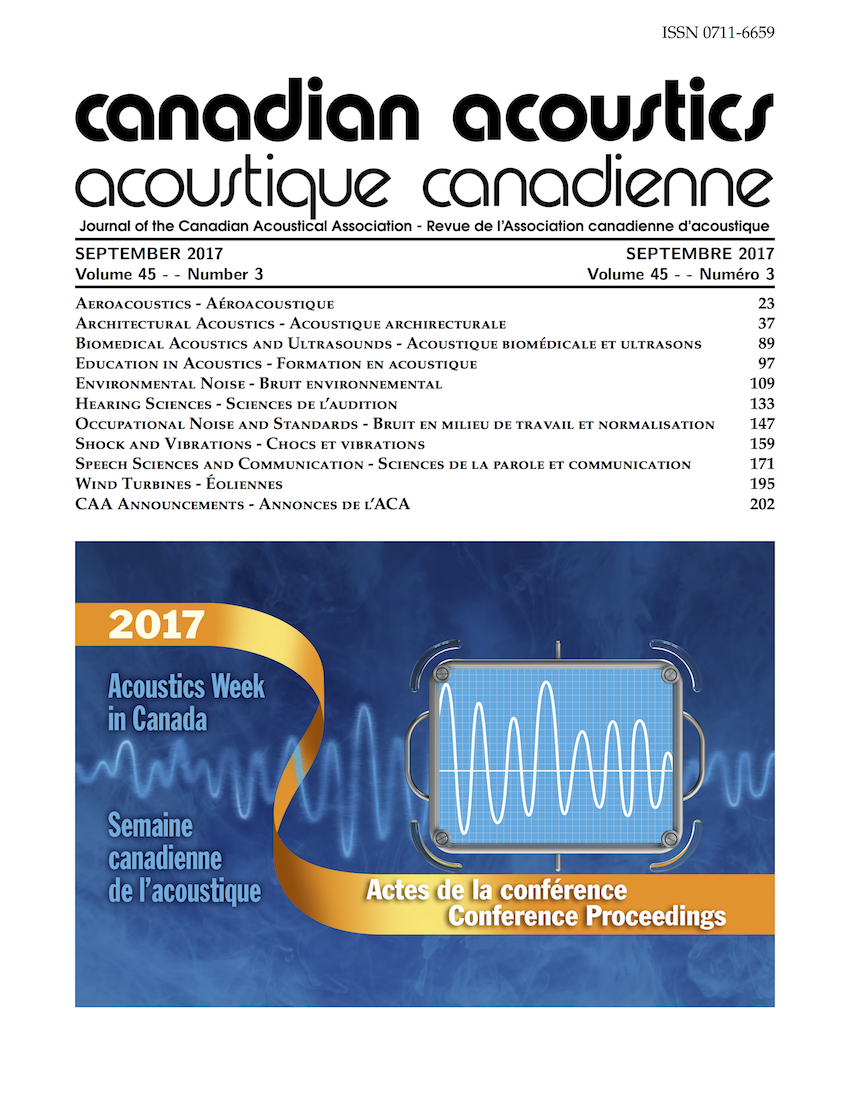Acoustic analysis of emotional speech processed by hearing aids
Abstract
A talker’s emotional state is one important type of information carried by the speech signal. Past studies have shown that listeners with hearing loss have difficulties identifying vocal emotion. However, there is little research on how much hearing aids may ameliorate these difficulties. The amplitude compression performed by hearing aids makes words easier to recognize, but little is known about how such processing affects the emotional cues carried in the speech signal. The speech materials used in this study were sentences spoken by a young female actor portraying different vocal emotions. These sentences were processed using different hearing aid simulations: a flat 10 dB gain across frequencies; linear gain according to NAL-NL2 targets; fast amplitude compression, and slow amplitude compression. Acoustic analyses of the hearing aid-processed speech showed that the amplitude envelope was flattened by fast amplitude compression, more so for sentences spoken in Angry and Happy conditions than in other emotion conditions. Hearing aid processing using NAL-NL2 targets also led to an increase in the amount of high-frequency energy, more so for sentences spoken in Neutral and Sad conditions than in other emotion conditions. We conclude that amplitude processing by hearing aids is beneficial for audibility but potentially detrimental for emotion understanding.Additional Files
Published
How to Cite
Issue
Section
License
Author Licensing Addendum
This Licensing Addendum ("Addendum") is entered into between the undersigned Author(s) and Canadian Acoustics journal published by the Canadian Acoustical Association (hereinafter referred to as the "Publisher"). The Author(s) and the Publisher agree as follows:
-
Retained Rights: The Author(s) retain(s) the following rights:
- The right to reproduce, distribute, and publicly display the Work on the Author's personal website or the website of the Author's institution.
- The right to use the Work in the Author's teaching activities and presentations.
- The right to include the Work in a compilation for the Author's personal use, not for sale.
-
Grant of License: The Author(s) grant(s) to the Publisher a worldwide exclusive license to publish, reproduce, distribute, and display the Work in Canadian Acoustics and any other formats and media deemed appropriate by the Publisher.
-
Attribution: The Publisher agrees to include proper attribution to the Author(s) in all publications and reproductions of the Work.
-
No Conflict: This Addendum is intended to be in harmony with, and not in conflict with, the terms and conditions of the original agreement entered into between the Author(s) and the Publisher.
-
Copyright Clause: Copyright on articles is held by the Author(s). The corresponding Author has the right to grant on behalf of all Authors and does grant on behalf of all Authors, a worldwide exclusive license to the Publisher and its licensees in perpetuity, in all forms, formats, and media (whether known now or created in the future), including but not limited to the rights to publish, reproduce, distribute, display, store, translate, create adaptations, reprints, include within collections, and create summaries, extracts, and/or abstracts of the Contribution.


